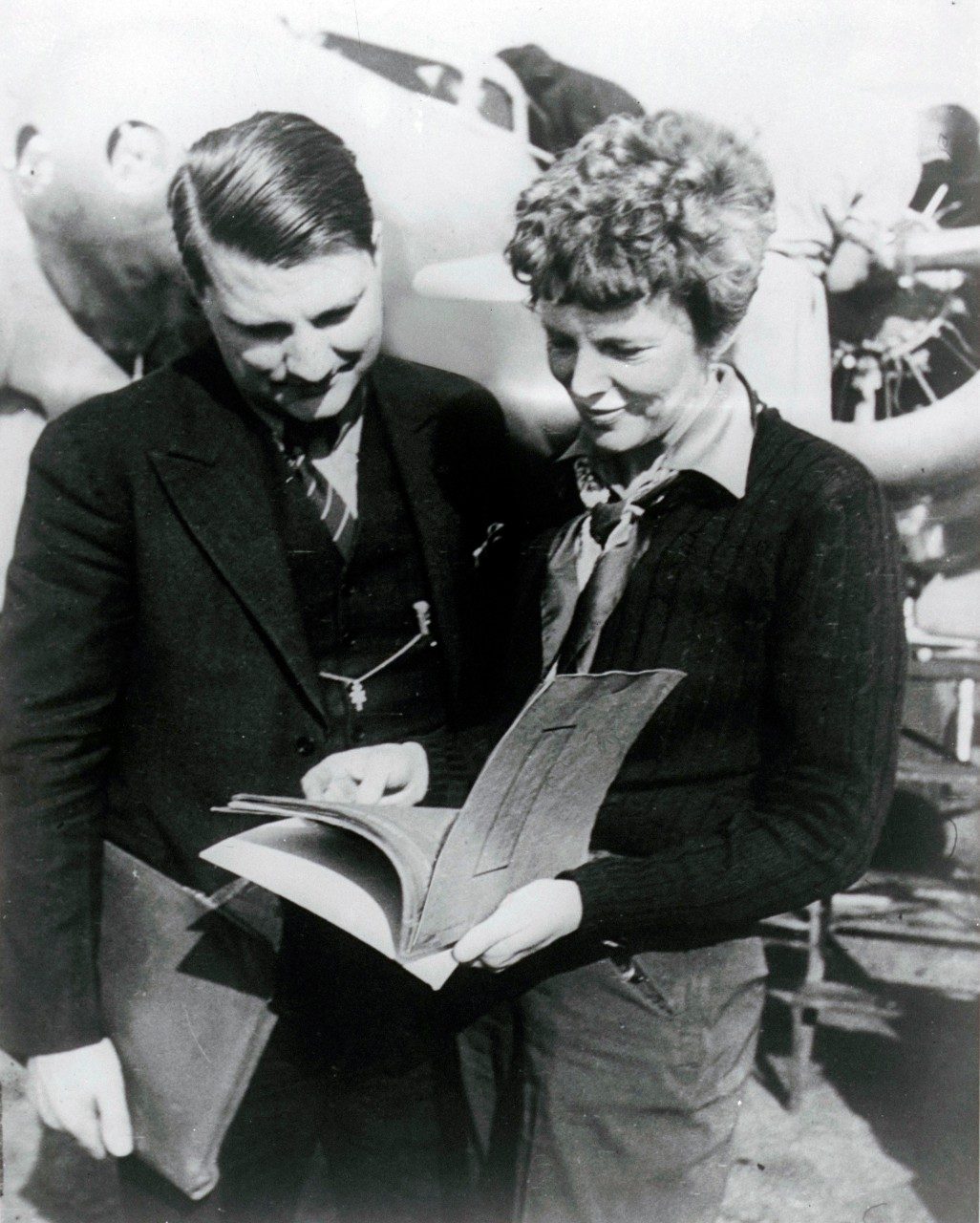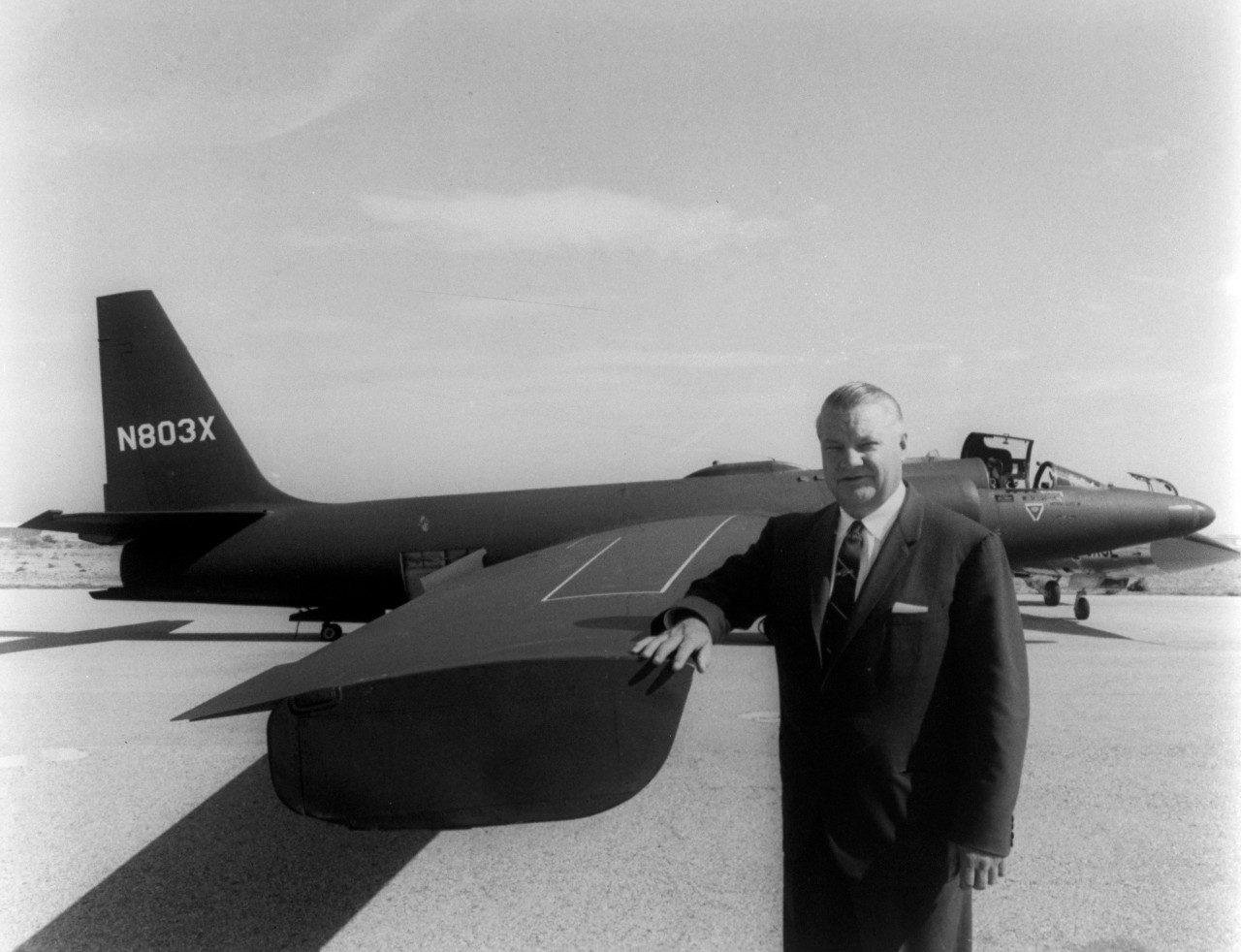In the summer of 1938, a twenty-eight-year-old farm boy from the Upper Peninsula of Michigan found himself holed up in a London hotel room. He had just seventy-two hours to design a new aircraft, one that the British Air Ministry needed to prepare for a war that looked more likely with each passing day
The young engineer’s name was Clarence Johnson, but ever since he’d trounced a local bully in grade school, he went by the more defiant nickname: “Kelly,” which suited his fierce and pugnacious personality.
Shortly after being hired by Lockheed six years earlier, Johnson had walked into his new boss’s office, pointed to the company’s promising new aircraft, the Electra, revealed a critical instability and then proceeded to correct the errors to the company’s amazement.
He lived by the motto “Be quick, be quiet, be on time.” So, while in London to finalize the sale of the new Hudson bomber, the British Air Ministry requested numerous design changes, and Johnson took on the challenge over three nearly sleepless days.
Although amazed by the new design’s precision, Air Ministry officials asked if they could entrust the future of their air force to someone so young. In their wisdom, Lockheed officials said they had complete faith in Clarence “Kelly” Johnson.
In time, it proved to be one of the most important decisions in the company’s history.

Making Aviation History, Again and Again
To this day, Kelly Johnson’s resume of accomplishments reads like a list of the most iconic airplanes in aviation history.
During World War II, he designed the speedy P-38 Lightning, which pummeled destroyers and intercepted enemy fighters and bombers from Berlin to Tokyo; late in the war his team developed America’s first operational jet fighter, the P-80, in less than six months. Then he delivered the immortal Constellation, which revolutionized commercial aviation. By 1955, Johnson and his secret division of engineers—dubbed Skunk Works—launched the world’s first dedicated spy plane, the U-2, just nine months after receiving an official contract.
Imperious, passionate, and demanding, Johnson was just as likely to deliver a kick to someone’s pants as a compliment to his face. In the pursuit of breakthrough designs, he tolerated errors—with the caveat that they were made just once. He asked only for hard work, good communication, and unwavering honesty. Despite his volatile approach, Johnson earned unparalleled loyalty from his highly skilled team.

His favorite maxim? KISS—Keep It Simple, Stupid.
And thus, revolutionary aircraft after revolutionary aircraft—including perhaps Johnson’s greatest achievement, the SR-71 Blackbird, still the world’s fastest aircraft fifty years after its first flight—rolled off the Lockheed line under Johnson’s watch.
As Tony LaVier, Lockheed’s former chief test pilot and a frequent Kelly arm-wrestling opponent, said, it was Johnson’s planes that “kept us out of World War III.”
The Loyal Skunk
A born engineer—“I knew I wanted to design airplanes since I was twelve years old,” he once said—Kelly was offered the position of company president an unprecedented three times, but declined each time to oversee Skunk Works, where he remained a senior advisor even after his formal retirement in 1975.
In total, Johnson shepherded some forty military and civilian aircraft into production. Countless medals and honors followed, including Collier Trophies, the Medal of Freedom, National Medal of Science and National Security Medal. But it was Hall Hibbard, Kelly’s boss, who summed up his abilities best.
“That damn Swede,” Hibbard said, “can actually see air.”
Sources and Additional Reading
- Boyne, Walter J. “Lord of the Skunk Works,” Air Force Magazine, June 2005, vol. 88, no. 6.
- Garrison, Peter. “Head Skunk,” Air & Space. March 2010.
- Oliver, Myrna. “Kelly Johnson, Design Pioneer of Lockheed Aircraft, Dies,” Los Angeles Times. 22 December 1990.
- Rich, Ben. “Clarence Leonard Kelly Johnson 1910–1990,” National Academy of Sciences, accessed 8 September 2012.




